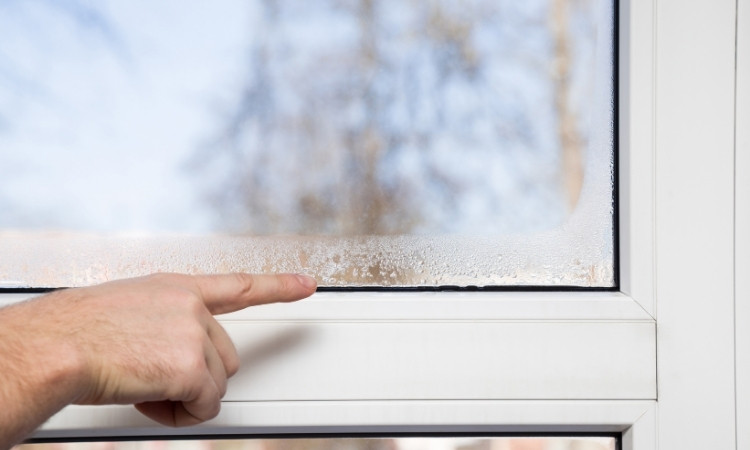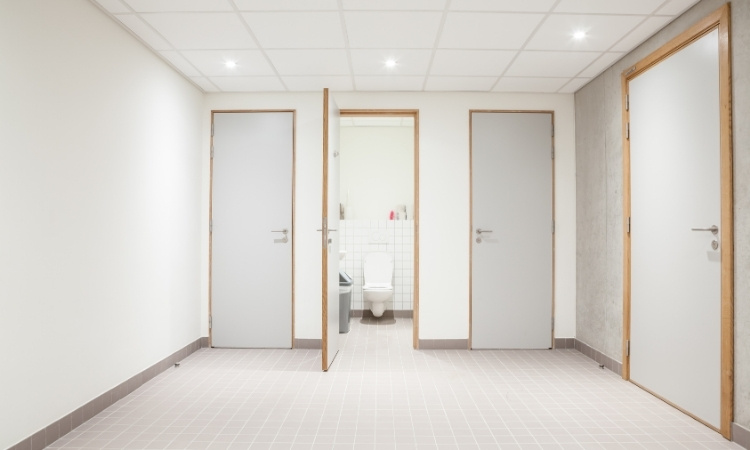Humidity affects toilet doors more than most people realize, and if you live in Singapore, you’ve probably faced the consequences firsthand. One day, your bathroom door works just fine, and the next, it’s swollen, stuck, or peeling at the edges. It’s not bad luck; it’s the weather.
The constant humidity year-round in Singapore not only makes the air feel thick but also causes damage to your toilet doors, particularly those made from materials like MDF. In this article, we’ll break down exactly how humidity affects toilet doors, why this is a common issue in homes in Singapore, and what you can do to prevent the damage before it starts. If you’ve ever struggled with a jammed or moldy door, this guide is for you. Also, if you need professional assistance with services related to folding toilet doors, slide and swing toilet doors, HDB toilet doors, etc., LS Toilet Door Singapore is your best choice.
Why Is Humidity a Problem in Singapore Bathrooms?
Singapore has a tropical climate. That means there’s a lot of rain, and the air always has a high moisture content. On most days, the humidity level in Singapore stays between 70% to 90%. When you take a hot shower, steam builds up in your bathroom. In the absence of adequate ventilation, this steam settles on walls, mirrors, and even the toilet door.
What a nightmare it must be to have that happen day after day. That moisture does not just go away. It slowly gets absorbed into your door material. This is how humidity begins to damage your toilet door, even if the damage is not visible right away.
This is a widespread problem in houses in Singapore, particularly in the smaller bathrooms that do not have exhaust fans or windows.
How Humidity Affects Toilet Doors Based on Material
Different types of toilet doors react differently to humidity. Let’s see how moisture affects different materials:
1. Wooden Toilet Doors
Wood is a natural material that breathes. It absorbs water when the air is humid and releases it when the air is dry. But in Singapore, the air is almost always wet.
Wooden doors swell when they come in contact with moisture. In the long term, you will find it difficult to close the door. It might rub against the floor or the frame. The paint may bubble and peel, and mold may grow in the corners.
In a few cases, wooden doors can even crack or split due to uneven swelling. This makes them unsafe and unattractive.

2. MDF (Medium-Density Fibreboard) Doors
MDF is simply compressed fibers of wood and glue. It’s less expensive than real wood, but it’s even more susceptible to water damage.
In humid bathrooms, MDF toilet doors swell very quickly. It may have lumps, depressions, and wavy lines on the surface. Once MDF gets wet, it’s hard to repair. Most of the time, you’ll need to replace the door.
3. PVC (Polyvinyl Chloride) Toilet Doors
PVC is a plastic material. It is water-resistant as compared to wood or MDF. Many homes in Singapore use PVC bi-fold doors for toilets because they are lightweight, easy to clean, and more affordable.
However, PVC doors are not perfect. Moisture can sneak through them when they are of poor quality or not well-fitted. That leads to internal condensation or mold. Over time, PVC doors can begin to warp, bend, or develop black spots.
4. Aluminium Toilet Doors
Aluminium is the most durable option. It doesn’t absorb water, and it doesn’t warp. Modern HDBs and condominiums in Singapore have aluminum toilet doors.
Still, aluminum doors can be affected by humidity in other ways. When rubber seals around the frame are broken, water can enter the joints and produce rust stains or even musty odors.
Visible Signs That Humidity is Affecting Your Toilet Door
It’s not always easy to know when humidity has started damaging your door. But here are clear signs to look out for:
- The door is hard to open or close. This usually means swelling has occurred.
- The door surface looks wavy or uneven. It is common in wooden and MDF doors.
- Peeling paint or bubbling laminate. It’s a sure sign of trapped moisture.
- Mold or mildew patches. It is often found on the bottom edge or corners.
- Bad odor or damp smell. This is caused by water absorption inside the material.
- Hinges are loose or creaking. It’s because the door shape has changed.
If you spot any of these, it means that humidity affects bathroom doors in your home, and action should be taken.
Simple Tips to Protect Toilet Doors from Humidity in Singapore
Humidity is here to stay. However, there are ways to save your bathroom doors and make them last longer:
Tip 1: Ventilate Your Bathroom
Get an exhaust fan or a dehumidifier. Do not forget to leave the door open 10-15 minutes after the hot shower. This permits the escape of trapped steam and avoids water accumulation on surfaces.
Tip 2: Use Moisture-Resistant Materials
Toilet doors made of PVC or aluminum are recommended when long-term solutions are needed. They are quite common, at least in Singapore, and are fully customizable to match your bath style.
Tip 3: Seal and Paint Properly
Seal your wooden doors with a waterproof coating or use marine-grade varnish. Repaint them every 1–2 years to keep moisture at bay.
Tip 4: Clean Regularly
Clean the door and frame with a dry cloth once a week. In areas that attract the growth of molds, apply anti-mold sprays that are not harmful to door materials. This inhibits the spread of spores.

Tip 5: Install a Door Gap or Stopper
Leave a gap beneath the toilet door to give room for air circulation. Even a stopper can also be fitted to keep the door slightly open after use so that moisture accumulation is minimized.
Best Types of Toilet Doors for Humid Environments
Here’s a quick look at ideal door options for bathrooms in Singapore:
- Aluminium Bi-fold Doors are durable, waterproof, and stylish.
- PVC Sliding Doors are budget-friendly, easy to maintain, and space-saving.
- ABS Doors are lightweight and resistant to warping and termites.
- Glass Panel Doors (Frosted) are used in modern bathrooms but must be combined with proper seals and framing.
These doors are specifically designed to handle the wet conditions of Singapore bathrooms.
Conclusion
Humidity is a hidden enemy in your home. You don’t always see it, but it quietly damages parts of your house, starting with your bathroom door. Humidity affects toilet doors by causing swelling, mold, cracks, and warping.
If you live in Singapore, where the air is constantly damp, taking the right steps early can save you money and stress. Choose better materials, improve ventilation, and keep your doors clean and dry.
By staying aware of how humidity affects toilet doors in Singapore, you can avoid damage before it starts and keep your bathroom looking new for years to come.

